#aboriginal and torres strait islander peoples
Text
Skipping ALL things in my queue, and all the asks in my ask box, to tell y'all about THIS that came out a few hours ago. I cannot express how excited I am about this information finally being published.
Its not the first evidence of pottery technologies found in Australia, but the artefacts that have been found at the Lizard Island group in the past havent necessarily been datable. Evidence of pottery in the Torres Strait was also found in the early 2000s, and its been analysed to be evidence of trade with Papua New Guinea (who have an AMAZING history of pottery technology).
To our amazement, around 40cm below the surface we began to find pieces of pottery among the shells in the excavation. We knew this was a big deal. We carefully bagged each piece of pottery and mapped where each sherd came from, and kept digging.
But as of now, there's officially dated evidence for locally made pottery in Australia, of at least 1800 years. Not only outside the Torres Straight, but 300km south. Not only 1800+ years old, but also pre-dating the original known dates for Torres Straight Islands pottery, suggesting the possibility of even earlier pottery technology trade with PNG. AND ITS DECORATED.
Radiocarbon dating of charcoal and shells found close to the pottery shows that it is between 2,950 and 1,815 years old, making it the earliest securely dated pottery ever found in Australia. Analysis of the clays and tempers shows that all of the pottery was likely made on Jiigurru.
The pottery stopped at about 80cm depth, with 82 pieces of pottery in total. Most are very small, with an average length of just 18 millimetres. The pottery assemblage includes rim and neck pieces and some of the pottery is decorated with pigment and incised lines.
#GUYS IM SO EXCITED#IVE BEEN WAITING FOR THIS#archaeology#australia#Aboriginal and Torres Strait Islander peoples#this is literally SO huge#they let a mouse do archaeology?#Indigenous peoples
610 notes
·
View notes
Text
For #BatAppreciationWeek:

Artist: Billy Missi (1970-2012)
Sapur Au Kubi (Dark Flock of Bats), 2006
linocut print 12/90 69x100cm
Cairns Art Gallery
Artist info:
Place of Birth
Mabuiag (Jervis Island), Torres Strait, Queensland, Australia
Language Group
Kala Lagaw Ya. Totem: Koedal, Kaigas, Dhangal
Clan Group
Wagedagam, Gumu, Pania
Artist notes:
"During mango, almond and cashew nut season a lot of Sapur (Flying Foxes) come to our village and gardens.
When the sun begins to set in the western sky, the Sapur usually come in flocks from the thick mangroves that fringe the coastline.
The Sapur only come out at dusk to raid the fruit trees so that people cannot see them. Otherwise they would be targeted by hunters and chased away. Despite this they do make a lot of noise as they feed.
The Sapur suck the juice out of the fruit and dispose of the rest making a lot of mess under the trees. They do this all night until morning breaks when they take flight back to their isolated, thick scrubs and mangroves.
Growing up in the islands in the 1970's, these sightings were common during fruit season.
It is our uncles who tell us that whenever flocks of sapur approach the gardens, the fruit is ripe.
This image shows a large number of Sapur flying to the village to feed on the fruit trees. They circle above the trees to choose where they will feed for the evening." - Billy Missi
#bat#bats#fruit bat#fruit bats#flying fox#flying foxes#Sapur#Billy Missi#Aboriginal and Torres Strait Islander peoples#Indigenous art#Australian art#contemporary art#21st century art#2000s#linocut#print#works on paper#Cairns art gallery#Torres Strait Islander culture#monochromatic#black and white#animal holiday#Bat Appreciation Week#animals in art#Australian wildlife#Australian animals
70 notes
·
View notes
Text
cohttps://www.washingtonpost.com/world/2023/10/14/australia-voice-parliament-indigenous-referendum/?wpisrc=nl_most
#settler colonialism#settler colonial violence#racism#bigotry and Hate#Aboriginal and Torres Strait Islander peoples#apartheid#Australia#beneficiaries of a genocide#global news#current events#LAND BACK#indigenous people#human rights
1 note
·
View note
Text
always was, always will be aboriginal land ❤️💛🖤
#dont know how many aussies follow me but its jmportant#for those who arent australia!!#today is invasion day otherwise known as australia#its a celebration of the mass genocide of the aboriginal and torres strait islander people#(the owners of aussie land)#weve also very recently lost a vote to give aboriginal people a say in what happens to that land#thankfully the protests all over the country were huge#ive just gotten home from one that had tens of thousands of people marching through meanjin#if youd like some links to support indigenous owned businesses (v important to do especially today)#feel free to dm me#australia#invasion day#australia day#jan 26th#change the date#vote yes#land back
85 notes
·
View notes
Text
pnf revival hope: no more of this shit




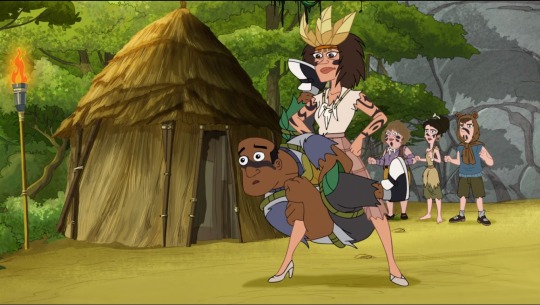



#phineas and ferb#milo murphy's law#dwampyverse#racism cw#anti native racism#anti indigenous racism#//there is. a lot to unpack here#//i know that dwampy didn't invent associating *every* island culture together with The Beach#//that's been a thing in the US since at least the late 1930s#//but what really pisses me off is the weird Island Tribe stuff#//especially the cannibal tribe 'gag' in the Island of Lost Dakotas#//**where do you think the cultural set up for that gag comes from?**#//racist stereotypes about polynesians maori torres strait islanders papuans aboriginal australians#//pretty much every culture that gets strip mined for The Island Aesthetic™#//i just. don't want this kind of shit in cartoons anymore yknow#//we KNOW stereotyping and using native american tribes as aesthetics or cannibals is bad#//and it happens a lot less nowadays esp in tv animation#//but some people do the same shit with island nations and it gets a pass for some reason. its really gross#//(and that's not even getting to the weird treatment of asian cultures in the dwampyverse)#//(but there's a photo and tag limit so. that's for another time)
9 notes
·
View notes
Text
In 1937, Winston Churchill said of the Palestinians, I quote, “I do not agree that the dog in a manger has the final right to the manger even though he may have lain there for a very long time. I do not admit that right. I do not admit for instance, that a great wrong has been done to the Red Indians of America or the black people of Australia. I do not admit that a wrong has been done to these people by the fact that a stronger race, a higher-grade race, a more worldly wise race to put it that way, has come in and taken their place.” That set the trend for the Israeli State’s attitude towards the Palestinians. In 1969, Israeli Prime Minister Golda Meir said, “Palestinians do not exist.” Her successor, Prime Minister Levi Eschol said, “What are Palestinians? When I came here (to Palestine), there were 250,000 non-Jews, mainly Arabs and Bedouins. It was a desert, more than underdeveloped. Nothing.” Prime Minister Menachem Begin called Palestinians “two-legged beasts”. Prime Minister Yitzhak Shamir called them “grasshoppers” who could be crushed. This is the language of Heads of State, not the words of ordinary people.
Arundhati Roy, ‘Our country has lost its moral compass’, Hindu
#Hindu#Arundhati Roy#Winston Churchill#Palestine#Native Americans#USA#Australia#Aboriginal and Torres Strait Islander (First Nations) people#Golda Meir#Levi Eschol#Menachem Begin#Yitzhak Shamir
12 notes
·
View notes
Text
Got a booklet in the mail that's all about the upcoming referendum, and one of the points for voting no is that voting yes could lead to a "dysfunctional government"
Bitch, this is Australia. We don't even have a functional government to begin with. The batshit-auspoll blog pretty much proves that
#im voting yes obviously#for non-australians the referendum is for including our native people in our government#basically it would change our constitution to require that aboriginal and torres strait islanders always have a voice in parliament#you can guess the main type of people who dont want indigenous australians to have a say in how the country is run
14 notes
·
View notes
Text

to all the blackfellas out there i hope youve had a good day and i wish you many more :)
#indigenous#indigenous people#first nations#aboriginal#torres strait islanders#indigenous peoples solidarity#indigenous peoples day#indigenous history#antiracism
4 notes
·
View notes
Text
i feel like every country has That Holiday That Can’t Be Referred To because there are such widespread, polarised views on its significant and history that using any name for it will cause you to spontaneously combust.
Australia’s is [~̴͍̙͈͈͕̝̜̹̓͛ͅ|̸̢̥͎̜͔̞̘̩̙̲̞̜̤̦̗͓̬͔̻̗̤̰͘^̷͖́͋̈́̌̈́̉͐̽̀̉̓͌̓̎̂̔̂͋̈̂͘͘̚͘͘͝€̵̛̫̭̂͗̀̆͐̋̽̃̽̓͂̊͆̒̀̈́̅͑͆̚̚̚͘͝͝ͅ~̶͎̤͈̦̬̩̦͍̯̤̬̳̙͔̺͖̜̗̫̮̲̯̠̝̗͉̄̂̓̈̌͐͐̚͜ͅ_̵̨̩̻͓̼̰̑͋͋̑͛̀̀͛͆̅̈̇́̚ͅ•̸̧̨̢̪̮̖͙̮̲̬̟͕̖̗̻̯͙̖̞̮͍̳̣̠̬̽̾͝͝ͅ’̶̢̨̢̳̼͕̞͖̪̥͔̱̩̤̱̣̤̘̠͎̳̻̰͉̪̎͗̀̂͑̒̇͒̃̀̇̎͌̀̕͜͜ͅi̴̝̰͖̞̘̟̊͆͗͋̾̾̓̉̍̌̈́̔̈́͑̽͗̽̾̈́͘͜͝ ̶̢̛̛̻̫͈̩̳̟̝̬̰̮̝̖̩͓̜̼͇̗̿̄͂́̊̽̃̀̄̓̅̆̀̈́̐͆́̾̓̀̊͐́̚ ̷̡̢̹͇̘̣̺͕̦͔̱̰̂̑̉͐̑͒͂̃͗͐̆̌͆͒͋̚͝͝ͅͅ-̸̢̛̛̰̥̭͔̭̬̤́͌͑͌͑͐̕ͅ;̴̨̡̪̙͎̞̻̩̝̝̬͎̣̮̠͆͒̈̾̓̑̅͆͂ͅ’̴͓̞̪̯͚͔̠̞̳̬̱̜͔̩̄̔́̔̐̌̋̃̌̎͘͘͝] on jan 26th what’s yours
#cause like#i’ve heard so many different aboriginal and torres strait islander opinions#which makes total sense. bc indigenous people are individuals (wow shocking)#but also makes it hard to know what to do?? so it’s now non-existent#politics#???#idk
0 notes
Note
Top 5 archaeological sites in Australia that you feel people should know more about? Or top 5 Australian artefacts?
I feel like I’ve talked a bit about artefacts in a few recent asks, and also I feel like a lot of Australian archaeology (and as such, sites) are very underrated, particularly on a global scale. Its often acknowledged in Australian archaeology that getting international academia to recognise the importance of our country’s archaeology is very very difficult.
While there’s a million and one sites I’d love to talk about, I’m going to TRY and give sites that relate to different aspects and locations
This is probably going to be long, so...
1. Nauwalabila, Madjedbebe (Malakunanja II), and the Deaf Adder Gorge region, Northern Territory (Aboriginal)
Rock shelters in this region, and specifically Madjedbebe, are currently the oldest location of human habitation in Australia. Dating evidence from 2017 excavations provided an estimate of earliest occupation of 50 000 years at certainty, possibly extending back as early as 65 000 (+/-6000). It also has provided a lot of evidence for research into the extensive grind stone technologies of the Pleistocene.
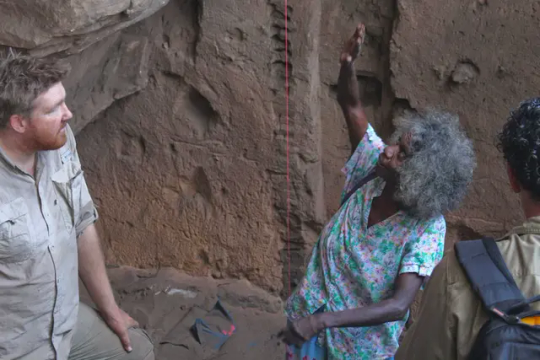
2. Cloggs Cave and the Buchan region of the Victorian Gippsland (Aboriginal)
So much research has been done into this region in various ways. Josephine Flood focused her research on Bogong Moth usage (and festivals) within this region, providing some of the earliest accepted academic research in support of Aboriginal peoples’ claims of large scale Bogong Moth Festivals in Australia’s highlands (although the fac that no one really believed communities until then…………..). In 2021 grind analysis found Bogong Moth residue, making this the earliest stone artefact with evidence of insect food remains. And in addition to that recent 2017 research in the area investigated Holocene occupation with Aboriginal community members, with a focus on understanding the interaction of spirituality with the resources found in the caves.

3. Mabuyag Island, Torres Strait Islands, Queensland (Torres Strait Islander)
Mabuyag Island (alternatively known as Mabuiag or Mabuyaagi) has archaeological evidence of human occupation since 7300 years ago. The island is both associated with recent religious practices associated with he heavy processing of dugong remains, and totemic associations with these, which played a role in early 2000s into community lead and directed archaeological research into ritual and religious traditions and practices. In addition to this, Mabuyag is the location of the first archaeological excavations in Australia to find pre-colonial pottery fragments. The fragments at the two sites on the island were associated with Melanesian and Papua New Guinean pottery trade. The excavations relating to pottery on the island played an important role in our understanding of domestic and international trade in pre-colonial Australia, and also formed an influence for the recent excavations at Lizard Island, 300km south, which identified the first datable domestically made pottery technology found in Australia.
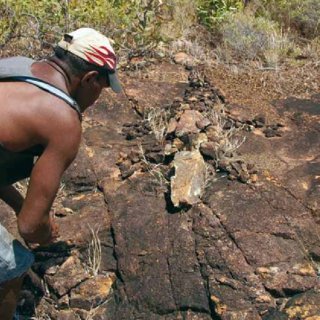
4. Hyde Park Barracks, Sydney, NSW
Hyde Park Barracks is part of a collection of colonial heritage structures in Australia, relating to Australia’s time as a penal settlement. Hyde Park Barracks in particular were the location of the housing of convict men from 1819 to 1830, with the 1830s to 1840s also involving the site being a location of additional convict punishment, and the base for the Board of Assignment of Servants. Following on from a reduction of convicts to NSW in the 1840s, the Barracks became the Female Immigration Depot, and the Orphan Institution, later becoming the Asylum for Infirm and Destitute Women.
This time period of women’s occupation provides some of the most interesting archaeological remains, as redevelopment and management of the site has found high rates of preservation within walls, and in areas below floorboards. This includes textiles and fabrics, papers, and other non-organic materials such as pipes (with their tobacco intact) stashed in what was once floor, wall, and ceiling cavities. Archaeological investigations in the area form one of the most detailed assemblages of artefacts relating to instituted women in the British Empire during the 19th century.
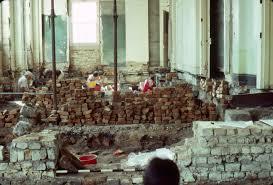

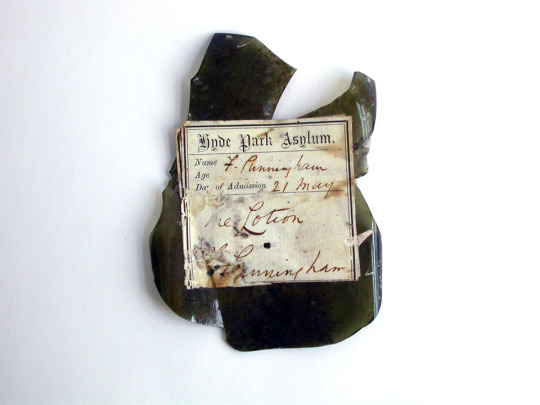
5. Notch Point, Western Australia (Multicultural heritage)
Notch Point is a site of varied and mixed archaeology, ranging from pre- and post- colonial period Aboriginal heritage, to diverse 19th century occupation of the region by Chinese, European, Malay, and Aboriginal peoples in association with pearling industries off the coast. In addition to this, the point is located on Dirk Hartog Island (otherwise known as Wirruwana), the site of the earliest European arrival in Western Australia in 1616, and contains archaeological evidence of both various early Dutch interactions with the island in 1616 and 1697, as well as French arrival in 1772, 1801, and 1818. Notch Point in particular also contains evidence of conflict between the predominantly Chinese population of the pearling industry, with white-Australian and European pearling masters, and pastoral agents. Its not a site that is widely discussed, but provides a fascinating overlay of the amount of varied cultural groups that can be present within Australia’s archaeological sites.

-
-
Honourable mentions to:
Lake Mungo and the Willandra Lakes which should 100% be on this list, but also I feel like I talk about it ALL the time and I wanted to mention sites that I actually don’t see discussed a lot. Theyre super important for cultural reasons, for archaeological reasons, and also for their role the development of archaeology, Aboriginal community consultation, and the role its played in developing repatriation practices in modern Australia. I have multiple posts about them HERE
Budj Bin Eel Traps in Victoria (same reasons, I’ve definitely talked about them before).
Juukan Gorge (and its destruction, im still horrified)
Harrietville Chinese Mining Village
Strangway Strings and The Peake Afghan Cameleer sites
Recherche Bay in Tasmania, and its 1792 French settlement sites
Homebush Mill & Mission Hall in QLD and Beowa National Park sites containing South Sea Islander heritage
#I feel like this constitutes a solid answer#i had fun#and hopefully people learn new things about Australian archaeology#and its diversity#sorry this took literally forever to answer#i got sick for a bit#and then its going to chill in my queue for a couple of days#archaeology#Australia#aboriginal and torres strait islander peoples#they let a mouse do archaeology?#Mice answers things
73 notes
·
View notes
Text
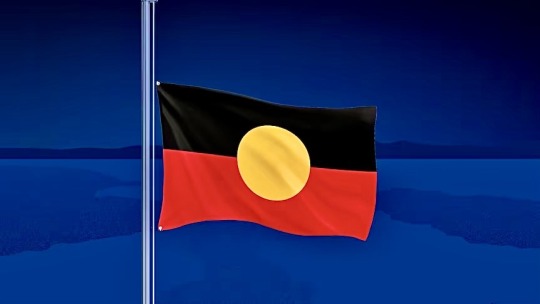
For some in Indigenous Australia, reconciliation can never be revived.
(ABC News: Emma Machan)
Is reconciliation really dead after the Voice to Parliament was voted down?
By Indigenous Affairs Editor, Bridget Brennan
ABC News Australia - 22 October 2023
•
•
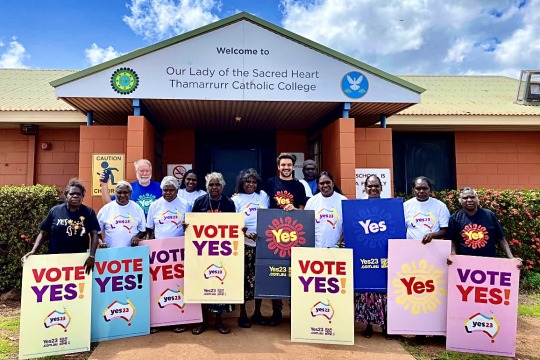
Indigenous leaders who campaigned for Yes have released a statement pledging to fight for justice.
(Supplied)
‘Shameful victory’: Indigenous leaders’ bitter lesson from Voice campaign.
By Mike Foley
The Age - October 22, 2023
•
•
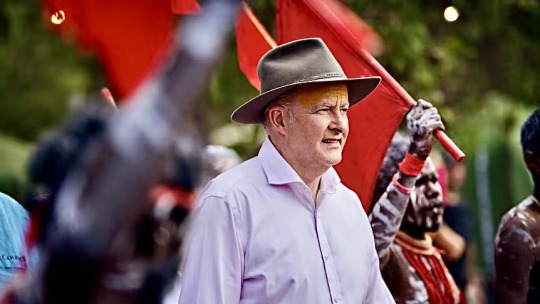
Indigenous leaders have written an open letter to Australia’s Prime Minister Anthony Albanese after the Voice referendum was defeated.
(ABC News: Michael Franchi)
Indigenous leaders break their silence, call referendum defeat 'appalling and mean-spirited'.
By Indigenous Affairs Editor, Bridget Brennan
ABC News Australia - 22 October 2023
•
#Australian Indigenous (Aboriginal & Torres Strait Islander) peoples#Race relations in Australia#Indigenous policy & reconciliation in Australia#Democracy & social justice in Australia#Australian Indigenous Voice to Parliament referendum 2023
1 note
·
View note
Text
The Voice, The Vote
The Voice Referendum in Australia will come to a vote on October, creating an Indigenous Voice to Parliament.
Approximately 3.8% of Australians today are indigenous, a group which lumps together both the native Aboriginal people of the mainland, and the Torres Strait Islanders, who come from islands off the northeast coast. According to the Australian Bureau of Statistics, their numbers are…

View On WordPress
#aboriginal people#Australia#parliament representation#political representation#the voice#torres strait islanders
0 notes
Text
Shoutout to all Oceanic LGBTQ+ folks.
Shoutout to all Austronesian LGBTQ+ folks.
Shoutout to all Polynesian LGBTQ+ folks.
Shoutout to all Micronesian LGBTQ+ folks.
Shoutout to all Melanesian LGBTQ+ folks.
Shoutout to all Kwaio LGBTQ+ people.
Shoutout to all Papuan LGBTQ+ folks.
Shoutout to all Australian LGBTQ+ folks.
Shoutout to all Kanak LGBTQ+ folks.
Shoutout to all Norfolk Islander LGBTQ+ folks.
Shoutout to all Māori LGBTQ+ folks.
Shoutout to all New Zealander LGBTQ+ folks.
Shoutout to all Aboriginal Australian LGBTQ+ folks.
Shoutout to all Caledonian LGBTQ+ folks.
Shoutout to all Pitcairn Islander LGBTQ+ folks.
Shoutout to all South Sea Islander LGBTQ+ folks.
Shoutout to all Rapa Nui LGBTQ+ folks.
Shoutout to all Nauruan LGBTQ+ folks.
Shoutout to all New Caledonian LGBTQ+ folks.
Shoutout to all Native Hawaiian LGBTQ+ folks.
Shoutout to all Chuukese LGBTQ+ folks.
Shoutout to all Solomon Islander LGBTQ+ folks.
Shoutout to all West Papuan LGBTQ+ folks.
Shoutout to all Fijian LGBTQ+ folks.
Shoutout to all Tahitian LGBTQ+ folks.
Shoutout to all Samoans LGBTQ+ folks.
Shoutout to all Guamanian LGBTQ+ folks.
Shoutout to all Chamorro LGBTQ+ folks.
Shoutout to all Torres Strait Islander LGBTQ+ folks.
Shoutout to all Ambonese LGBTQ+ folks.
Shoutout to all Tongan LGBTQ+ folks.
Shoutout to all Marquesas Islander LGBTQ+ folks.
Shoutout to all Yapese LGBTQ+ folks.
Shoutout to all Kiribati LGBTQ+ folks.
Shoutout to all Niuean LGBTQ+ folks.
Shoutout to all Northern Mariana Islander LGBTQ+ folks.
Shoutout to all Mashellese LGBTQ+ folks.
Take pride in it all. Your culture, your identity, it’s all so beautiful. Celebrate where you are from and who you are. It makes you you, and that is something to be proud of.
post for Middle Easterners, post for Asians, post for Pacific Islanders , post for Hispanics, post for Africans , post for Native Americans, post for Caribbeans
#mental health#positivity#self care#mental illness#self help#recovery#ed recovery#pro recovery#actuallytraumatized#actually cptsd#lgbt#lgbtq#lgbt positivity#lesbian#gay#sapphic#bi#bisexual#mlm#wlw#trans#transgender#Oceania#nonbinary#asexual#aromantic#aroace#intersex#pansexual#genderfluid
770 notes
·
View notes
Text


Condoman
In 1987, Indigenous sexual health worker Aunty Gracelyn Smallwood and her team felt that safe sex advertising wasn’t effectively targeting people in Australia’s remote Indigenous communities. In response, they created Condoman - “The Deadly Predator of Sexual Health” - who spoke to Indigenous people in language they could relate to, and removed stigma from conversations about sexual health.
Condoman became something of a cult figure in Australia, and in 2009 he was relaunched with a suite of comics, animations, and merch, including branded condoms. He was also joined by his “deadly, slippery sister” Lubelicious, who promoted consent, the use of water based lube, and women’s health, for her sisters and sistergirls (an Indigenous term analogous to trans women).
We covered Condoman in our podcast on the AIDS epidemic in Australia.
Keep an eye on this blog throughout the week as we continue highlighting queer Aboriginal and Torres Strait Islander history and culture for NAIDOC Week.
#naidoc2024#naidoc week#aids#hiv#condoman#queer history#gay history#lgbt history#queer#gay#lgbt#lgbtq#indigenous history#aboriginal history
422 notes
·
View notes
Note
Hello! I've just found your podcast and listened into some older episodes. They helped me on my journey of understanding my sexuality, and formulate why some stories appear more sincere than others. Thank you two!
In one episode that Aboriginal people are "like black people in Australia" (I hope I quote this correctly). If It's no hassle, I would be curious in understanding the social circumstnaces you are descrbing. Happily waiting for a new episode, and thank you very much for the fun and informative work!
hello there, thank you so much for listening to gayv club! I'm chuffed that you love the podcast (psst follow @gayvclubpodcast) 🥰
So, to answer your question, Aboriginal and Torres Strait Islander peoples are the Indigenous people to what the world calls "Australia". And we are Black people. We are Black people and were racialised as Black Indigenous people when British and European people colonised the land over 200 years ago. Aboriginal people were called Black throughout Australias white colonial history and so we also call ourselves Black.
Aboriginal and Torres Strait Islander peoples in this country have been subjected to anti-Black violence and genocidal policies that include but aren't limited to slavery, deaths in custody, segregation, and apartheid. Not to mention forced child removal and assimilation policies intended to "breed the Black out" of our culture.
But we're still here! Aboriginal and Torres Strait Islander peoples are the oldest continuously practising culture in the world. Recent archaeological discoveries show Aboriginal people were baking bread even before the ancient Egyptians and Greeks. As a community, we've had our own Black power movements, music movements, and art movements too.
I'm generalising a lot because Aboriginal and Torres Strait Islander peoples are very diverse. We've got over 400 languages and nations, each with its own cultural rules. While many of us have lost our language and culture because of colonisation, there are many who haven't and many working to restore and preserve it.
One thing I will make very clear is that all Aboriginal and Torres Strait Islander peoples refer to ourselves as Black (sometimes without the C) regardless of what we look like. There are many Aboriginal people, like myself, who are pale skinned and still call ourselves Black and are accepted as such. This is because we do NOT adhere to blood quantum that colonisers try to put on us. Our connection to Blackness is about our connection to family and community, it is not *only* about how we look.
Hope this helps you understand a bit. I for one am very proud to be Blak. I'm very proud to be Aboriginal. If you want to learn more about Aboriginal culture and history, here's some resources:
youtube
271 notes
·
View notes
Text
Indigenous here is a political designation which describes a people groups relationship with colonialism - ie. Saami people are an indigenous group but Finnish/Swedish/Norwegian/Russian people are not, even though they are both genetically from the same countries- because of the groups different relationships with colonialism.
We ask your questions so you don’t have to! Submit your questions to have them posted anonymously as polls.
#polls#incognito polls#anonymous#tumblr polls#tumblr users#questions#polls about the world#submitted dec 18#demographics#indigenous#indigenous peoples#first nations#geography#ancestry
360 notes
·
View notes